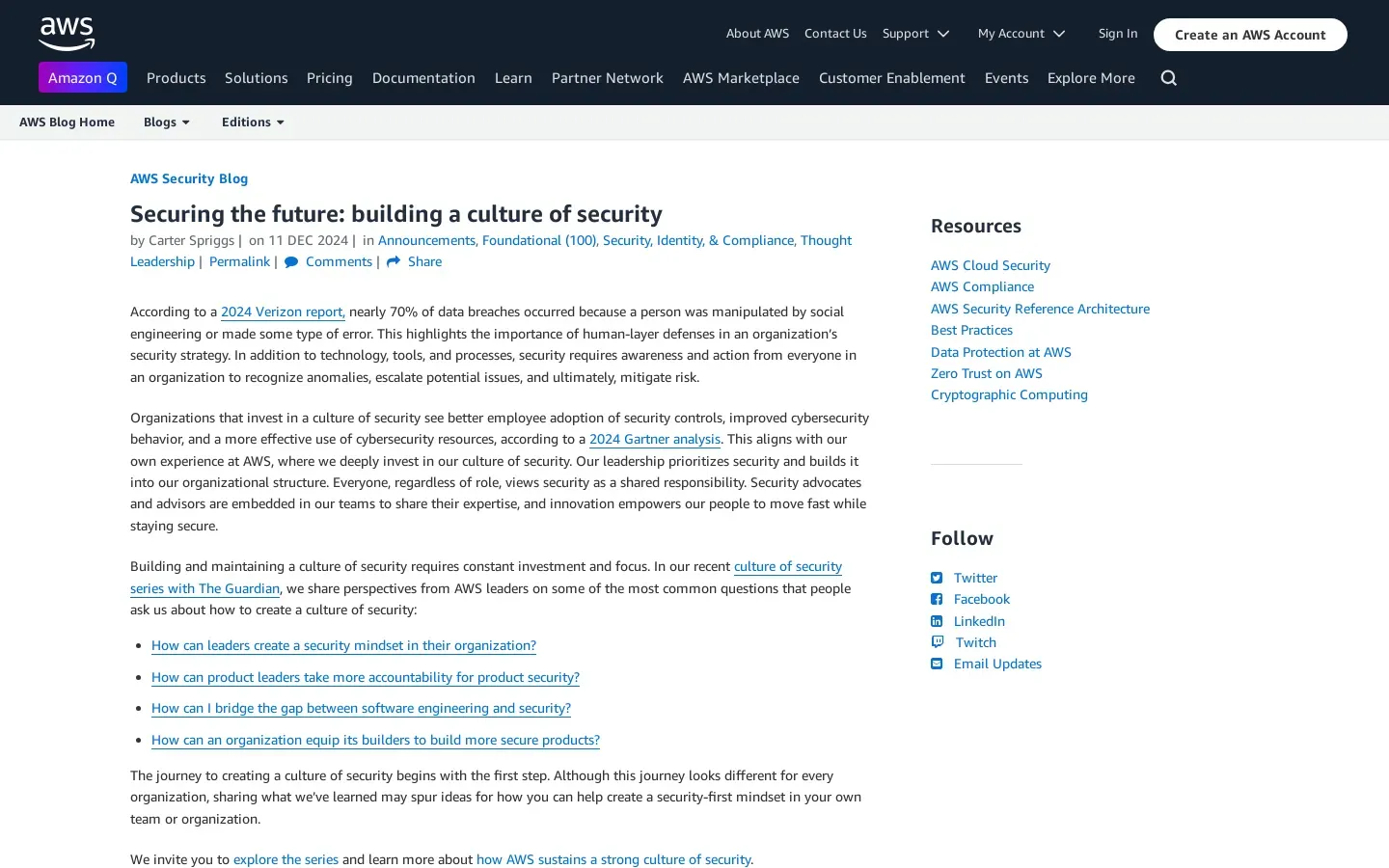
Verizon Report Highlights Human Error in Data Breaches
/ 3 min read
Quick take - The 2024 Verizon report highlights that nearly 70% of data breaches are caused by human error and social engineering, emphasizing the importance of employee training and a security-focused culture within organizations to mitigate these risks.
Fast Facts
- The 2024 Verizon report reveals that nearly 70% of data breaches are caused by social engineering and human error, highlighting the importance of human-layer defenses in cybersecurity.
- Organizations are encouraged to cultivate a security culture, which enhances employee adherence to protocols and improves overall cybersecurity behaviors.
- Amazon Web Services (AWS) exemplifies best practices by embedding security advocates within teams to promote shared responsibility for security.
- Regular security awareness training is essential for educating employees about social engineering tactics and recognizing suspicious communications to mitigate risks.
- Leadership commitment to security and improved communication between software engineering and security teams are crucial for effective implementation of security measures.
Human Error and Social Engineering: Key Drivers of Data Breaches, Reveals 2024 Verizon Report
In a revealing analysis of the current cybersecurity landscape, Verizon’s 2024 report highlights a concerning trend: nearly 70% of data breaches are attributed to social engineering and human error. This statistic underscores the critical importance of human-layer defenses in safeguarding organizational data.
The Human Factor in Cybersecurity
The report emphasizes that human error remains a significant vulnerability in cybersecurity strategies. Social engineering tactics, such as phishing, exploit this weakness by manipulating individuals into divulging sensitive information or granting unauthorized access. The findings suggest that organizations must prioritize comprehensive employee training and foster a culture of security awareness to mitigate these risks.
Cultivating a Culture of Security
Organizations that succeed in embedding security into their culture often see improved adherence to security protocols. The report cites Amazon Web Services (AWS) as a leading example, highlighting their integration of security advocates within teams. These advocates play a crucial role in promoting security best practices and ensuring that all employees share responsibility for maintaining security standards.
The Role of Leadership
Leadership commitment is pivotal in establishing a robust security culture. By prioritizing security at the highest levels, organizations can instill a mindset that values security across all departments. This approach not only enhances employee engagement with security measures but also strengthens the organization’s overall defense against breaches.
Addressing Training Gaps
The report identifies inadequate employee training as a key risk factor for data breaches. Employees often lack the skills to recognize and respond to potential threats, such as phishing attempts or unusual account activities. Regular security awareness training sessions are recommended to educate employees on identifying social engineering tactics and understanding the significance of reporting anomalies.
Enhancing Communication and Accountability
Effective communication between software engineering and security teams is essential for bridging accountability gaps in product security. By fostering collaboration, organizations can ensure that security measures are consistently applied throughout the development process, reducing vulnerabilities that could be exploited by attackers.
Proactive Security Measures
To further bolster defenses, organizations are encouraged to implement proactive measures like bug bounty programs. These initiatives invite external researchers to identify and report vulnerabilities, providing an additional layer of scrutiny to enhance system security.
As cybersecurity threats continue to evolve, organizations must adapt by reinforcing their human-layer defenses and cultivating a culture where security is everyone’s responsibility. By doing so, they can better protect sensitive information and maintain trust with stakeholders in an increasingly digital world.



